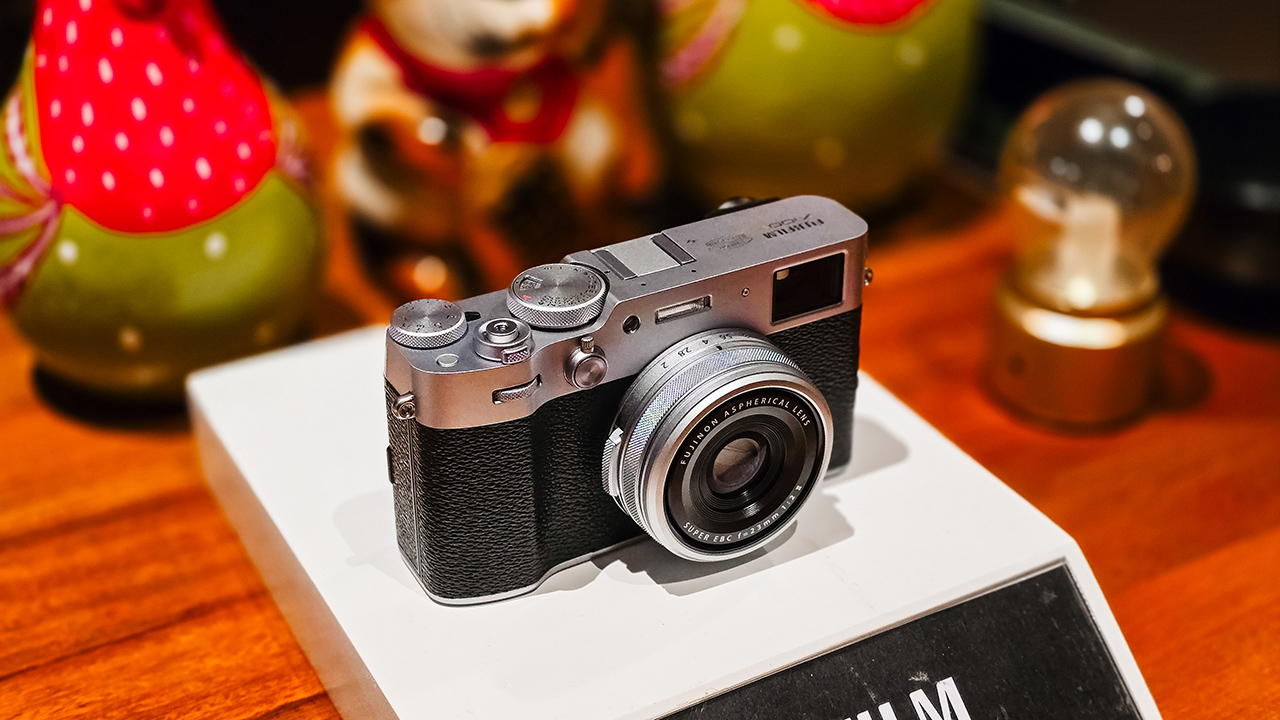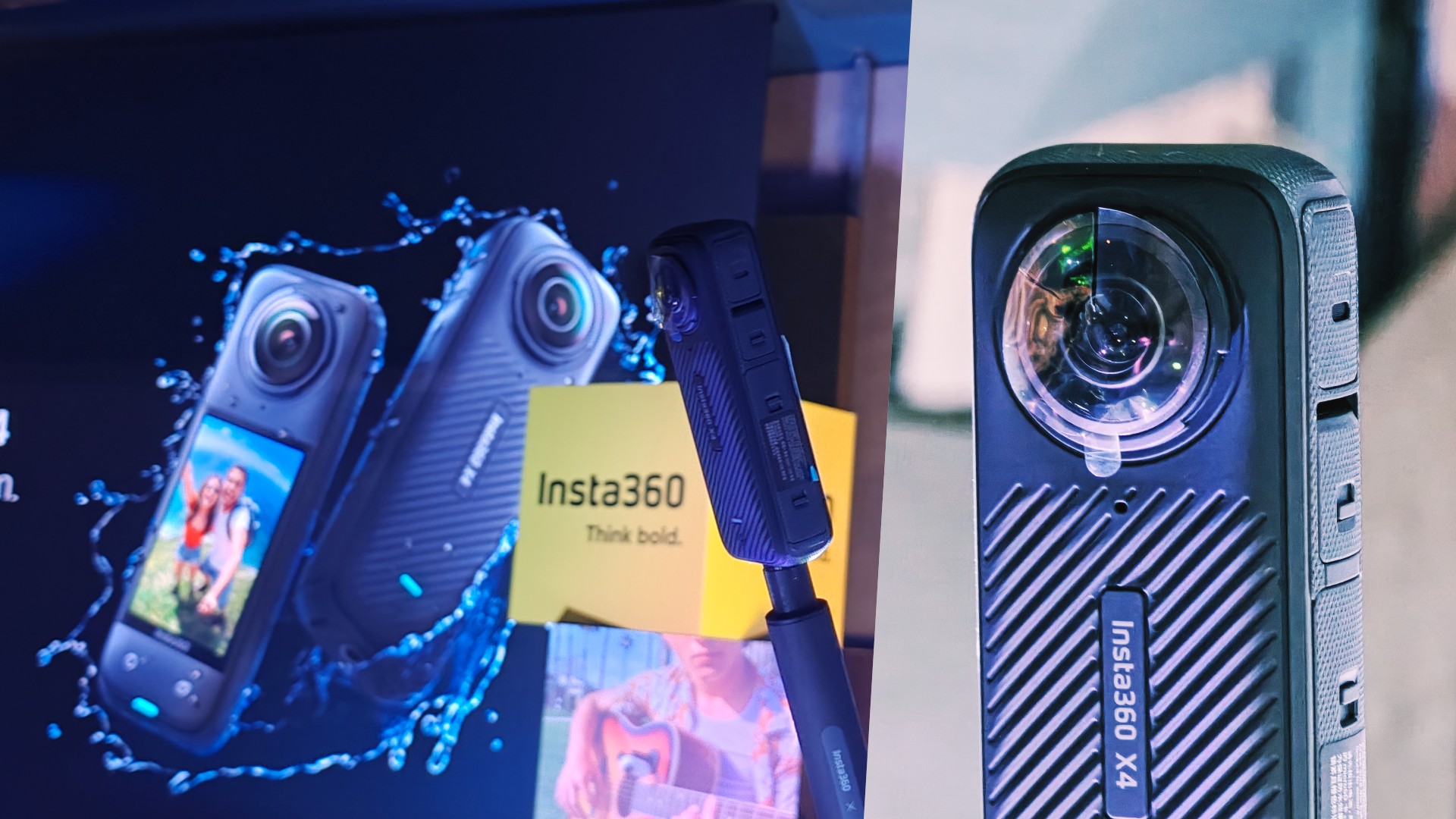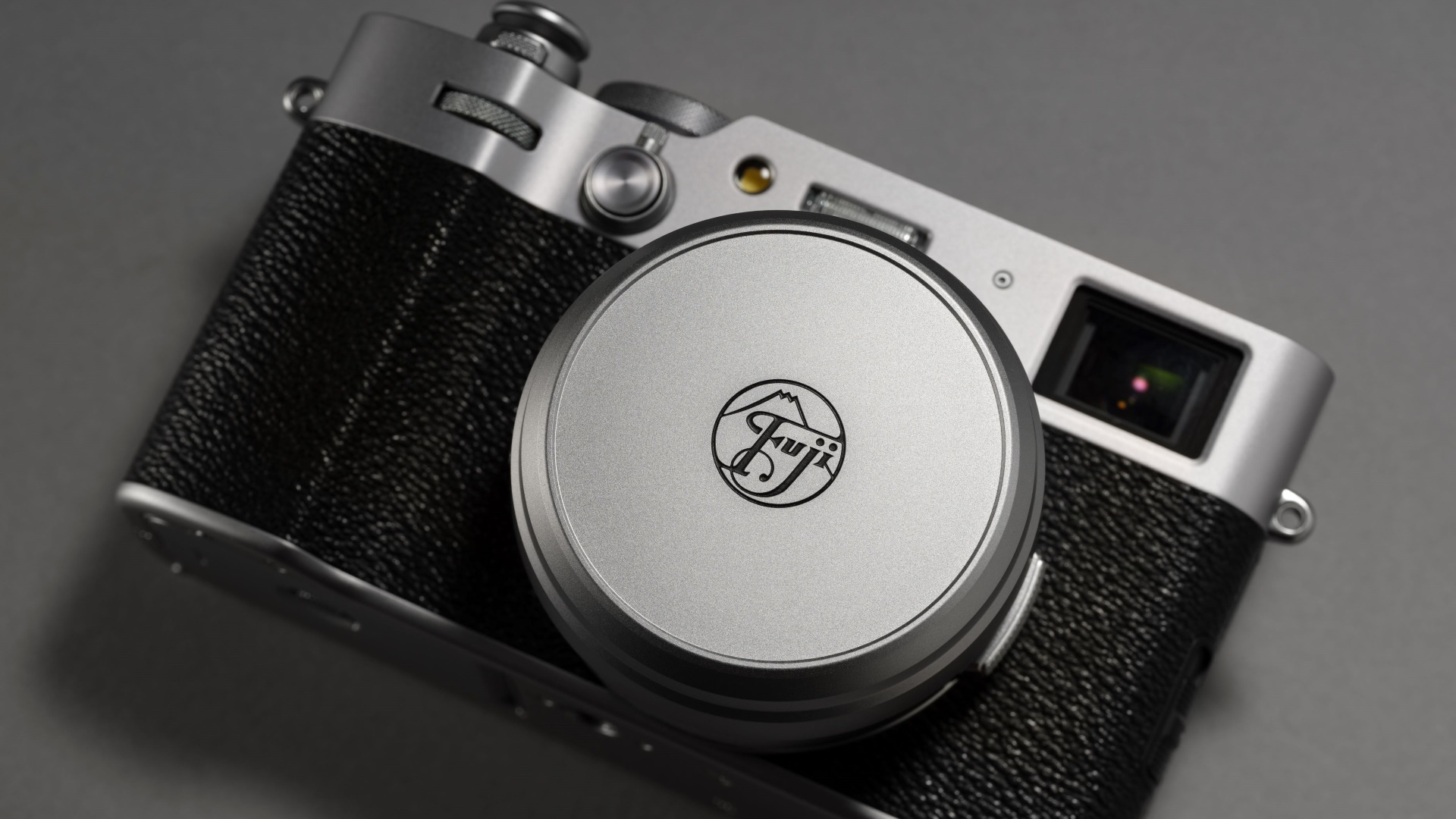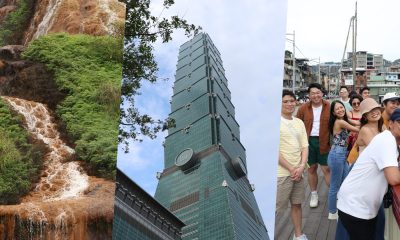Cameras
Canon EOS R5 and R6 with focus on video now official
It’s a huge splash for Canon

Several camera enthusiasts have been waiting on these announcements from Canon and on paper, it certainly looks like they did not disappoint. The Canon EOS R5 and R6 are now official and they’re packed with really darn good features.
Both cameras are aimed at both amateur and professional videographers, photographers, creators, and everything else in between. The primary features include a revamped AF system, fast continuous shooting of up to 20 FPS, in-body stabilization, and dual card slots.
Powerful sensors, improved AF
The EOS R5 has a 45-megapixel full-frame CMOS sensor. Ideal for large format commercial printing, capturing intricate details in landscape photography, and even intensive cropping frequently required in wildlife photography. Its native ISO can go up to 51,200, with the option to expand to 102,400.
The EOS R6 is equipped with a 20-megapixel full-frame sensor, inherited from the flagship EOS-1DX Mark III. It shares the same image sensor and image processor as the EOS-1DX Mark III. It’s capable of achieving a native ISO of up to 102,400 (expandable to 204,800).
Canon’s Dual Pixel CMOS AF — a proprietary Auto Focus technology — has been upgraded. AF coverage area has been expanded to cover the entire sensor (100% x 100%). This means focusing is available on any part of the frame. Convenient and effective.
Face Tracking with Eye Detection AF is also coming to this pair of EOS cameras. This tech is now able to recognize not just the body, but also head and eyes of the subjects. Ideal for capturing fast-moving subjects.
Stabilization and 8K, 4K videos
The EOS R5 and EOS R6 incorporate a 5-axis camera-shake blur correction In-Body Image Stabilizer (In-Body IS) function. Both cameras use a new algorithm, through the new imaging engine DIGIC X, to process gyro signal data and achieve higher image stabilization effects.
Both cameras also have two card slots that can accommodate one CFexpress card and one SD memory card. The CFexpress card supports high-speed transfer for faster transmission of hi-res images as well as internal recording of 8K raw videos. Yes, 8K.
Again through DIGIC X, the EOS R5 and R6 are able to record 8K raw videos. The EOS R5 is also capable of recording up to 120fps in 4K. Meanwhile, the EOS R6 is able to shoot 4K videos at up to 60fps, and slow motion at 120fps in Full HD, all without crop similar to EOS R5.
Easy file transfers
Transferring footage is also made easier with improved connectivity features. The EOS R5 supports both 5GHz and 2.4GHz wireless LAN without the need for any additional accessory. The EOS R6 only supports 2.4GHz but both can handle FTP and FTPS data transfer.
Both also have Bluetooth Low Energy (BLE) and can work with the new image.canon cloud platform. The cameras can automatically upload image and video files and store them in the image.canon cloud for up to 30 days with no limit in size.
With image.canon, users can also automatically transfer original image data to various cloud platforms such as Google Photos, Google Drive or Adobe Creative Cloud.
The EOS R5 and EOS R6 both have a magnesium alloy body. They are lightweight and prevent dust and water droplets from entering the camera. The EOS R5 sports a top LCD panel while EOS R6 has a Mode Dial.
Pricing and availability
The Canon EOS R5 retails for US$ 3,899 body only and US$ 4,999 with a kit lens option. It will be available end of July.
Meanwhile the EOS R6 (body only) is priced at US$ 2,899 with the kit lens option retailing for US$ 3,599. It will be available end of August.


The highly-anticipated Fujifilm X100VI will make its Philippine debut at the FUJIKINA MNL 2024 Camera Fest in Bonifacio High Street, Taguig City. The event is free and open to the public and will be held from April 27 to 28. To register, click this link: FUJIKINA MNL
Celebrity Khalil Ramos will grace the local launch of the Fujifilm X100VI on the second day. Announced a few months ago, the X100VI uses a new 40.2MP X-Trans CMOS 5 HR sensor and is powered by an X-Processor 5 engine. These work together to allow more light absorption. The brand’s latest X100 series offering also features in-body image stabilization for the first time in the series. Moreover, the camera can film up to 6.2K at 30fps.
ALSO READ: Fujifilm announces X100VI, limited-edition model
Aside from the X100VI’s release, FUJIKINA 2024 also allows visitors to engage in various activities. First, there’s the Photo Walk event that lets enthusiasts explore Bonifacio High Street at night and capture its vibrant atmosphere. Participants may event get the chance to win a Fujifilm X-T30 II with their best shots.
Next, Fujifilm’s X-Series and GFX cameras will also be on display, free for passersby to test and feel. There are also three shooting studios for guests to capture memories: the Selfie & Pet, Travel, and Smile studios. And for regular Fujifilm camera users, the event will also offer free servicing.
Furthermore, there are two major photo exhibits throughout High Street, showcasing the best images from the Fujifilm community. Lastly, Fujifilm users may also pre-register for an exclusive XPPH Night here.
You may check the full schedule below.
April 27 – Amphitheater
10:00 a.m. onwards:
- Touch and Try
- Express Service
- XPPH Print Market
4:00 p.m. to 6:00 p.m.:
- Opening program
- Workshops
7:00 p.m. onwards:
- Photo Walk
- Contest
April 28 – Amphitheater
10:00 a.m. onwards:
- Touch and Try
- Express Service
- XPPH Print Market
4:00 p.m. to 6:00 p.m.:
- X100VI launch
7:00 p.m. onwards:
- XPPH Night
April 27 and 28 – C1 Park
10:00 a.m. onwards:
- Fujifilm Interactive Studios (Portrait & Pet, Wanderlust, Project Smile)
- Film Simulation Exhibit
April 27 and 28 – South Street
10:00 a.m. onwards:
- Nationwide Photo and Video Walk 2023 Exhibit

Insta360 is redefining what action cameras are capable of with the introduction of the Insta360 X4. Insta360’s latest offering allows users to film 8K resolution 360-degree videos. In addition, it can record slow-motion 4K videos at up to 120fps.
As expected, the X4 retains Insta360’s “shoot first, point later” ability and invisible selfie stick effect. Moreover, it doubles as a traditional action camera with “flat” captures in Single-Lens mode at up to 4K at 60fps.
The Insta360 X4 is available for US$ 499.99/ PhP 30,990 on the official Insta360 store, Amazon, and other retailers.
Incredible third-person views at 8K
The 8K at 30fps resolution is the highest setting for a 360-degree action camera yet. With such high resolution, users can expect detailed and sharp videos even after reframing, or choosing which specific angle to include in the capture.
For slow-motion, users can now film 4K videos at 100fps for cinematic shots slowed down four times. Furthermore, the highest resolution for a 60fps 360-degree video is upgraded to 5.7K. You may also use the X4 to take stills, as it is capable of 72MP 360-degree photos.
Two cameras in one
Aside from its default 360-degree capturing mode, users may utilize the Insta360 X4 as a regular wide-angle camera. They may shoot a first-person POV video with Single-Lens mode from a chest-mounted position. “Regular” means not having the fish eye-looking effect from the 360-degree mode and having ordinary, flat-looking images instead.
Under the Single-Lens mode, users will be able to record 4K videos at 60fps with an ultra-wide 170-degree field of view. This can be upgraded even more with MaxView while retaining 4K resolution at 30fps. Meanwhile, Me Mode, which erases the selfie stick, can film 4K at up to 120fps.
There are also upgrades on the X4’s creative shooting modes. Bullet Time can now shoot slow-mos at 5.7K at 120fps, or even 3K at an astounding 240fps. Hyperlapse videos, meanwhile, can be recorded in 8K quality.
Action specialist
A 5nm AI chip powers the Insta360 X4, along with a smart control system with Voice and Gesture Control features, and a host of AI-powered shooting and editing features.
The action camera comes with a 2.5-inch Corning Gorila Glass touchscreen for on-the-go use. Users may adjust the settings or choose the desired mode more easily.
The X4’s 2,290mAh battery allows for up to a 135-minute run time (at 5.7K@30fps). This is an impressive 67% longer battery life than its predecessor, the X3.
Moreover, the device is waterproof at up to 164 feet for diving, and cold-weather resistant at up to -20 degrees Celsius.
AI-powered editing
The X4 also harnesses the power of AI. Using the Insta360 app, users may simply move their phone or use the virtual joystick to point the camera. AI Edit, on the other hand, lets Insta360’s entire algorithm do the work for the reframing process. This improved algorithm has better subject detection, helping users save time. Users may also get creative with Shot Lab and Motion ND filters.
Cameras
Fujifilm announces X100VI, limited-edition model
The first X100 camera with in-body image stabilization

Fujifilm has launched its latest compact digital camera: The Fujifilm X100VI. The sixth generation model introduces a handful of firsts for an X100 series camera.
The X100VI boasts of a new 40.2MP X-Trans CMOS 5 HR sensor and is powered by an X-Processor 5 engine. These work together to allow more light than any prior X100 camera.
For the first time, the camera offers in-body image stabilization with up to 6.0 stops. Filming at up to 6.2K 30p has also been made possible.
High performance
In addition to more light absorption, the X100VI features ISO 125, which was only available as an extension in previous models. Its tracking AF function also ensures high-quality content especially for filming.
The camera comes with 20 film simulation modes, including the new “REALA ACE” mode for a diverse range of distinctive tones. This particular mode offers faithful color reproduction and high-contrast tonality which is suitable for various subjects and situations.
Moreover, the X100VI supports Frame.io Camera to Cloud without the need for additional accessories. Users will only need to wirelessly connect to the internet to automatically upload photos and videos. This speeds up the process from shooting to final editing.
Better operability
The X100VI also has an “Advanced Hybrid Viewfinder” function. With this, users will be able to switch between the optical (OVF) and electronic (EVF) viewfinders. The EVF itself is equipped with a high-resolution OLED panel with about 3.69 million dots.
Meanwhile, the “Electronic Range Finder” (ERF) allows a small EVF to be simultaneously displayed on the OVF. This permits the photographer to capture the subject in the OVF while magnifying the in-focus area in the small EVF.
Functional design
The Fujifilm X100VI retains the compact and lightweight look of its previous iterations. As with its predecessors, the latest model’s body uses aluminum for the top and bottom surfaces.
It has also adopted the X100V’s ultra-thin tilt LCD monitor design. The shape of the grip, on the other hand, has been fine-tuned to ensure a better feel. The positions of the buttons on the back have also been moved.
Limited edition X100VI
In addition to its release, a limited edition X100VI model will be made available to celebrate Fujifilm’s 90th anniversary. Only 1,934 units of the limited edition model will be available worldwide.
These numbered X100VI units are packaged in a special box that includes a special strap, soft release button, and history cards.
The camera body is engraved with the founding logo in 1934, along with a unique serial number.
In the Philippines, The Limited edition X100VI will retail for PhP 130,990. Meanwhile, the standard edition is priced at PhP 103,990.
-

 Features1 week ago
Features1 week agoFortify your home office or business setup with these devices
-

 Events2 weeks ago
Events2 weeks agoStellar Blade: PlayStation taps cosplayers to play Eve for game’s launch
-

 Gaming2 weeks ago
Gaming2 weeks agoThe Rogue Prince of Persia looks like an ultra-colorful roguelite
-

 Accessories2 weeks ago
Accessories2 weeks agoLogitech unveils G Pro X 60 gaming keyboard: Price, details
-

 Gaming2 weeks ago
Gaming2 weeks agoStar Wars Outlaws release date revealed
-

 Reviews1 week ago
Reviews1 week agorealme 12+ 5G review: One month later
-

 Gaming2 weeks ago
Gaming2 weeks agoLenovo confirms development of a Legion Go 2
-

 Deals2 weeks ago
Deals2 weeks agoTCL P635 TV: Big savings for TCL’s anniversary



























